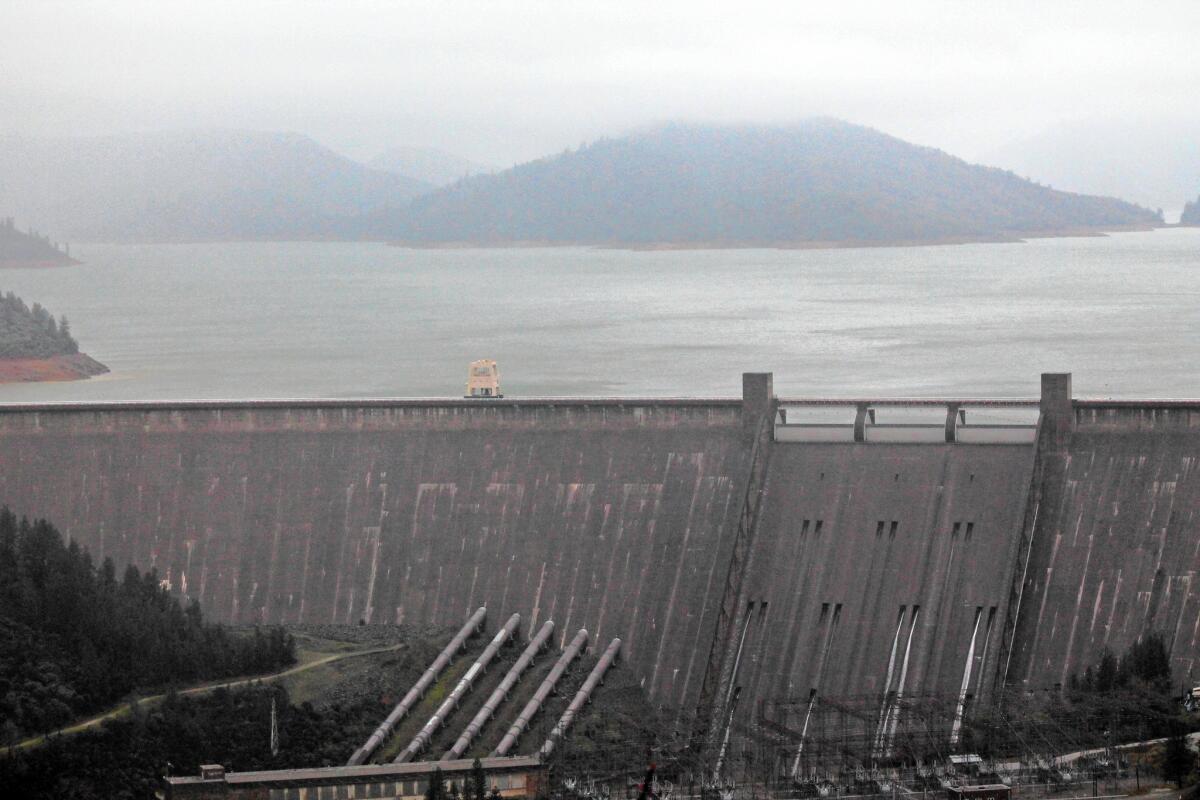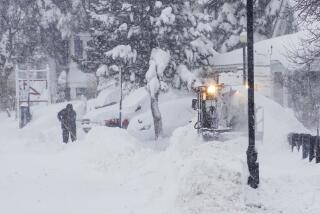Latest storms are filling reservoirs and bringing hopes of a ‘March miracle’

Ever since a series of winter storms began dumping rain and snow in Northern California last year, officials have been looking for tangible signs that all those storms were making a dent in the state’s four-year drought.
This week delivered some pretty powerful evidence.
The latest storms over the weekend pushed California’s biggest reservoir past its historical average for mid-March and put the second-largest one at its historical average, officials said.
The rising reservoirs, along with growing snowpack in the Sierra Nevada, are important because both are key sources of water for California.
The snowpack now stands at 92% of normal statewide, with the northern area now at 102% of normal.
“It’s definitely a step in the right direction, but it’s not a panacea. We’re not saved,” said Shane Hunt, a spokesman with the federal Bureau of Reclamation, which oversees Lake Shasta, the state’s largest reservoir. “We dug a pretty big hole in a lot of spots.”
Together the Lake Shasta and Lake Oroville reservoirs have a capacity of more than 8 million acre-feet of water. After a wet weekend in Northern California, Lake Shasta was above its average for this time of year, and by 4 p.m. Monday Lake Oroville had surpassed its historical average, said Department of Water Resources spokesman Doug Carlson.
Some people have referred to the recent storms that have dumped rain and snow on the Sierra Nevada as the “March Miracle.”
“It’s happened a little quicker than I personally thought,” Carlson said. “It would appear the [seasonal storms] have really achieved what they historically do, which is deliver a lot of rainfall to the mountains.”
Water and Power is The Times’ guide to the drought. Sign up to get the free newsletter >>

Neither reservoir has reached its historical average in nearly three years, data show.
“I don’t know if people here will be dancing in their cubicles when [Oroville] hits the historic average, but it will be the first time it’s done that for the duration of the drought. That is reason to be joyous,” Carlson said.
Other reservoirs across the state are also doing well. Once-anemic Lake Folsom is now at 116% of historical average for the date and at 69% of total capacity.
According to the National Weather Service, it rained nearly a foot in El Dorado County and more than 9 inches in Shasta County between Friday and Monday mornings. Since March 1, the Shasta reservoir has received more than 16 inches.
On March 6, Lake Oroville saw its biggest single-day rise in 12 years, the Department of Water Resources reported.
If the soggy month continues, both reservoirs could fill to the brim by April, officials say. Neither reservoir has been full since about the beginning of the drought, officials said.
The Shasta reservoir would need an additional 1 million acre-feet of rain to reach its capacity.
“It’s possible that it could fill if the wet pattern continues.... It’s on track to at least get to average storage” for that time of year, Hunt said.
After four years of drought, even hitting a 15-year historical average for a California reservoir is a sign of progress, experts say.
Twitter: @JosephSerna
ALSO
L.A. plans to fix sidewalks, then hand off responsibility for future repairs
Beverly Hills put a spotlight on its celebrity water wasters -- and it worked
Developer should lose building permits over illegally chopped trees, L.A. officials say
More to Read
Start your day right
Sign up for Essential California for news, features and recommendations from the L.A. Times and beyond in your inbox six days a week.
You may occasionally receive promotional content from the Los Angeles Times.







